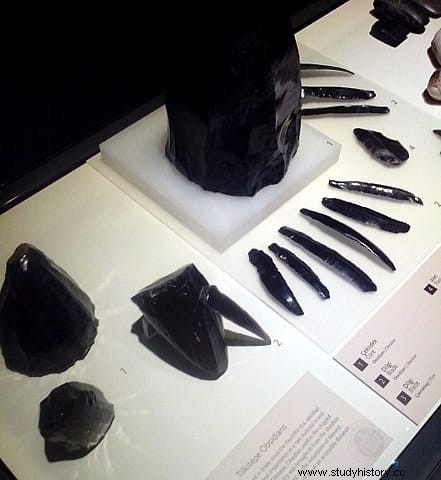Archaeologists from the Ca' Foscari University found for the first time prehistoric obsidian mines from the Bronze Age, located in Georgia.
Although obsidian mining is known to have been a common practice in prehistory, pits dug for this purpose have never been found until now. In Europe, most of this volcanic material was collected on the surface, such as the pieces found in some Neolithic sites on the Iberian Peninsula, from the slopes of the volcanic massif of Mount Arci in Sardinia.
This is one of only four obsidian deposits in the central Mediterranean, along with those of Lipari, Pantellaria and Palmarola. In the Aegean there are those of Melos and Gyali, while in Anatolia those of Acigol and the Göllü Dag volcano are known.
From these deposits, obsidian traveled the trade routes to the East and West, and was used as early as the Stone Age to make cutting tools. Its importance was maintained even throughout the fourth and third millennia BC, a time to which the discovery made by the team of archaeologist Paolo Biagi on Mount Chikiani in Georgia would correspond.

The importance of the discovery lies in the data it can provide on mining activities in Eurasian history, and the planned extraction of this type of volcanic glass, an aspect that researchers have little knowledge of.
Mount Chikiani rises 2,400 meters above sea level, to the northeast of Lake Paravani, and has numerous veins of obsidian that originated from the eruption of a volcano about 3 million years ago. On its northern slope, at an altitude of about 2,200 meters, up to 250 wells were found for extracting the material, all of them surrounded by remains from mining activity.
The extracted obsidian was later worked in workshops, eight of them also found in the vicinity of the wells, although the researchers believe that there may be many more. The resulting artifacts were then distributed to prehistoric settlements via trade routes, some of them hundreds of miles away, although the system used is unknown.
One of the aspects that most interests archaeologists is knowing how the extraction was organized in a place so high that it remained covered with snow for six months a year and with extremely low temperatures.
Along with the mining wells, burial mounds and megalithic complexes were also found that include alignments of stones up to 100 meters long. Their study could shed light on hitherto unknown aspects of the Kurá-Araxes culture, a civilization that developed in the area between 3400 and 2000 BC. and whose main settlement is on the Ararat plateau.
